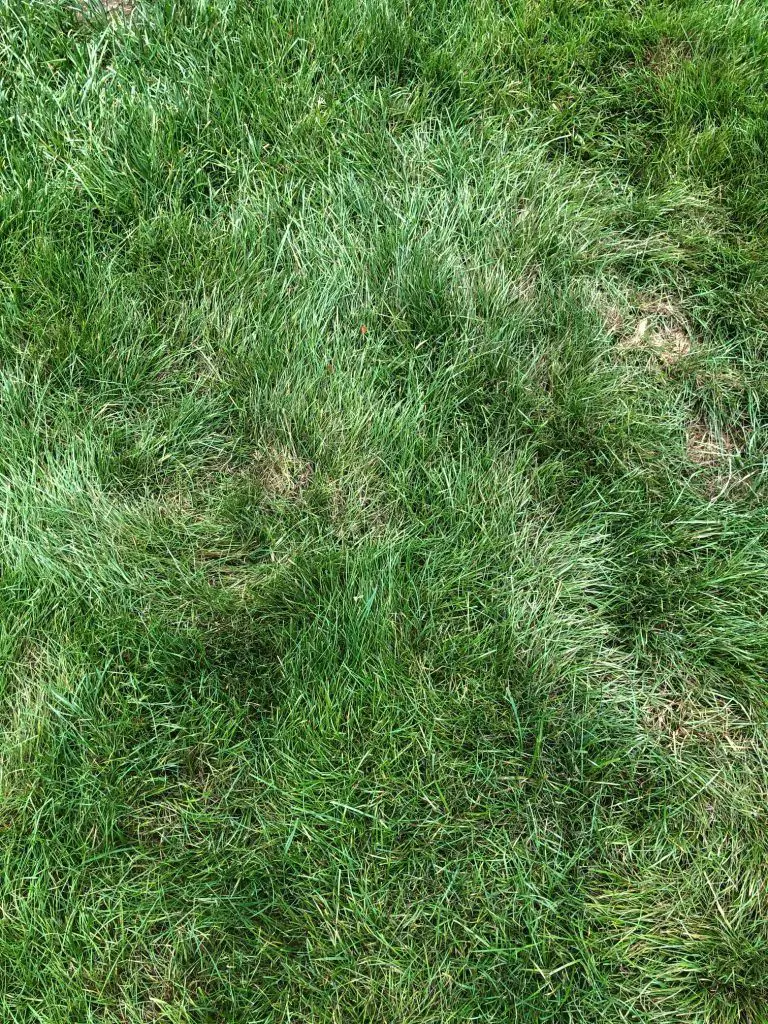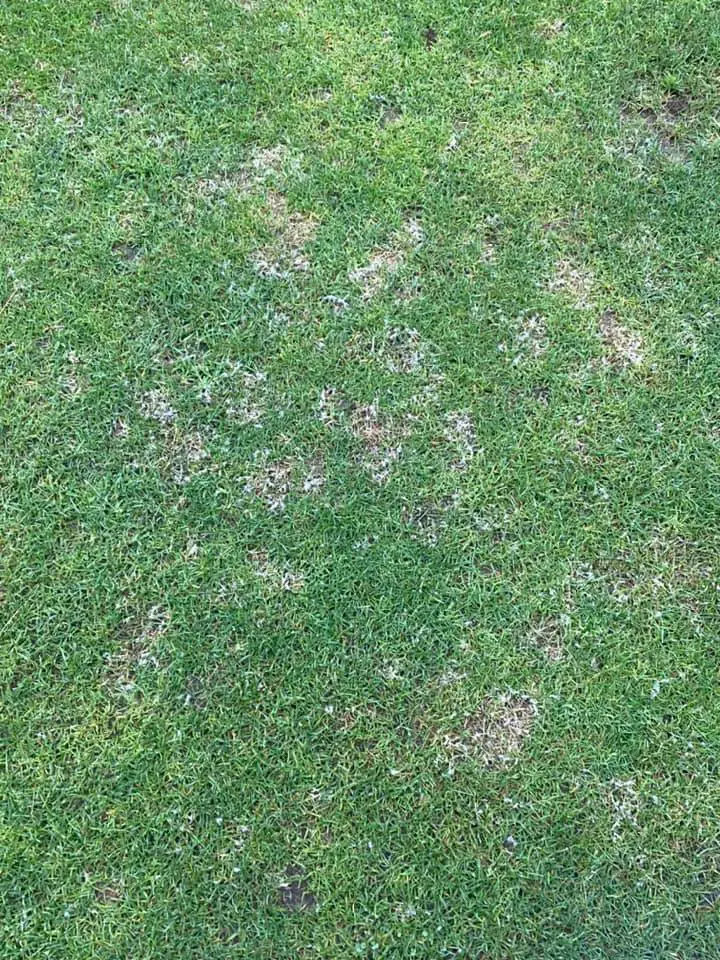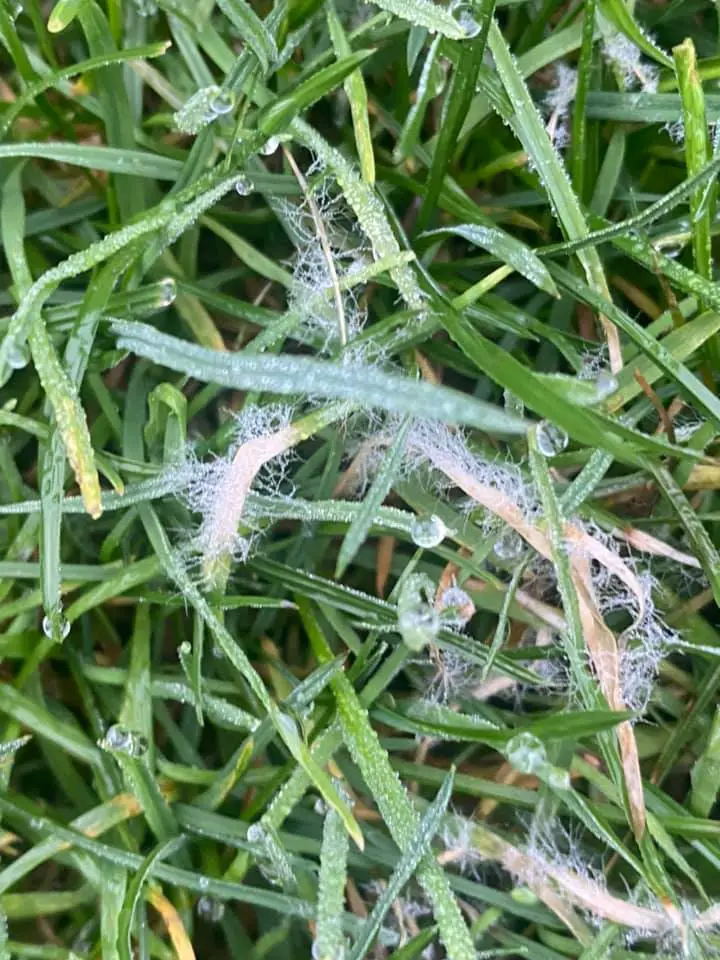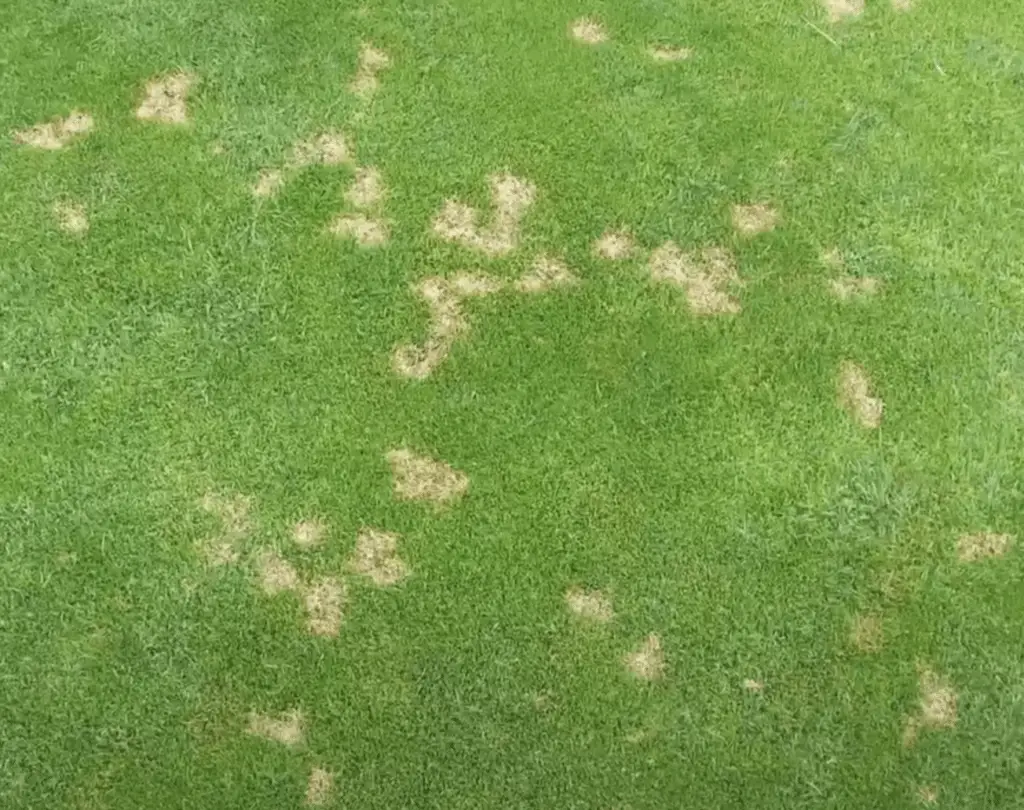LAWN PHIX PRO TIPS
Being in the Northeast, I see quite a bit of dollar spot each season – particularly in 2023. Dollar spot is often associated with low nitrogen and is most common in Kentucky Bluegrass lawns. But high heat and humidity, prolonged leaf wetness, and lack of sunlight create the perfect environment and conditions for dollar spot fungus. Small round patches throughout the lawn, often with mycelium ‘spider webs’, make dollar spot easy to identify.
Feed your lawn enough nitrogen in the springtime and incorporate nutrition in the form of amino acids, micronutrients, and soil amendments to help prevent dollar spot – while following best cultural practices (watering and mowing). For fungicide treatments, it’s important not to use Azoxystrobin on active dollar spot as it can feed the disease and make matters worse. I have great results and highly recommend a dual-action fungicide like Armada or Pillar G, or rotting single modes of action like Propiconazole or Myclobutanil.
Cool-season grasses make for a visually lovely lawn, but they are also vulnerable to certain types of lawn disease like the dreaded dollar spot fungus. This lawn disease is named for the straw-colored grass patches that are about the size of a silver dollar during the early stages of the fungal infection. Dollar spot lawn disease often affects golf courses, but it plagues residential turf too. Unfortunately, dollar spot infection is much easier to prevent than control, so if you do spot those telltale silver dollar shapes infecting your lawn in late spring or early summer, you’ll want to take steps to control dollar spot sooner rather than later.
Table of Contents
What Is Dollar Spot Lawn Disease?
Dollar spot infection is caused by the fungus Clarireedia jacksonii, known formerly as Sclerotinia homoecarpa. Regardless of its Latin name, you don’t want to see this lawn disease show up on your turf. Dollar spot causes straw-colored grass to appear patches that are about the size of a silver dollar sunken into the turf. The patches tend to appear light tan or straw-colored but may also be white in appearance. As this lawn disease progresses, it can affect the entire grass plant down to the soil, or rather, the entire leaf blade. The good news is that although the lawn disease kills grass leaves, it does not affect roots or soils.
The disease starts in the middle of the grass blade with an hourglass-shaped lesion, with dark bands at the margins between good and bad. As the disease damages the leaf tissue, it gets weak in the affected area and bends at that point which professionals describe as “flagging”.
If left unchecked, the individual spots that are about the size of a silver dollar will expand and begin to bleed into one another, causing large areas of the turf to be affected. The diseased leaf blades can die, making the lawn appear quite ill and unsightly.
What Causes Dollar Spot Fungus in Lawns?
Put simply, dollar spot is caused by warm temperatures, high humidity, excess moisture, and low nitrogen lawns. If the outside humidity percentage plus the outside temperatures (in Fahrenheit) equal 150 or more, then the chances of lawn fungus are high. For example, an 85 degree day with 65% humidity = 150 (be on alert).
Dollar spot fungus thrives under certain conditions that include dry soil and moist air. Often, dollar spot fungus starts to multiply in early spring but it may not cause spots to appear until late spring and early summer. However, it often reaches its unsightly zenith in mid or late summer, particularly when there is high humidity and low rainfall. In such conditions, the roots may be deprived of water, but the grass blades remain wet from dew or irrigation (especially in early morning hours), which allows the fungus to thrive. Extended periods of grass leaf wetness, cool nights, and temperatures that range from 60 – 80 degrees Fahrenheit are conducive to severe dollar spot outbreaks.
Dollar spot fungus can be transferred to lawns from lawn care equipment or even shoes that are contaminated by the fungus. The fungus spreads via wind and grass clippings too.
What Are Dollar Spot Webs?
Although small spots the size of a silver dollar are the hallmarks of dollar spot lawn disease, you may also notice mycelium – or what appear to be small cottony strings that look like cobwebs on your lawn before the spots appear. If you spot what appears to be spider webs on areas of your lawn, you should take steps to control dollar spot right away before it can erupt throughout your lawn, killing susceptible grasses.






Dollar Spot Prevention
Although it’s possible to control dollar spot disease, it’s much easier to prevent it by maintaining a healthy lawn. To prevent dollar spot lawn disease, apply nitrogen fertilizer to your turf in late spring. Dollar spot thrives in lawns with not enough lawn food, so nitrogen fertilizer is a helpful preventative. This fertilizer can help you control the disease if you do have an outbreak. Adequate nitrogen fertilization may also enable you to prevent other lawn diseases from infecting your turf.
Dry, compacted soil is conducive to this lawn disease, so be sure to aerate your lawn in the spring or early fall. Remove excess thatch to help promote better airflow and circulation throughout the grass. Unchecked dollar spot may result in requiring reseeding, so also overseed with a mix of cool-season grass types. Water deeply but infrequently in the early mornings to ensure the roots get an adequate supply of water – this is an important step. Excess moisture on the grass for long periods can promote dollar spot activity.
Avoid excessive thatch buildup that can harbor moisture. Finally, lawn mowing. Ensure that your lawnmower blade is clean, sharp, and set to a height that’s ideal for your particular turf species. A clean deck will help prevent the spread of the disease. And of course, never mow more than one-third of the grass blade at a time.
Dollar Spot Control & Treatment
To control dollar spot disease, you can contact fungicides applications such as Propiconazole 14.3, Clearys, or Eagle 20EW. Do not use any lawn fungicide with the active ingredients (AI) azoxystrobin, as this can have an opposite effect on the disease.
While chemical treatments can be effective for many fungal grass infections, dollar spot is one that quickly develops fungicide resistance, so you’ll also want to employ those cultural control preventative measures we outlined above as they’ll help your lawn recover more quickly–and completely. When applying fungicides, follow the label directions carefully. If you’re still struggling to control dollar spot on your affected turf, you may want to rely on professional treatment.
Dollar Spot FAQs
Does dollar spot go away?
Dollar spot thrives under certain conditions; if you remove those conditions (i.e. excessive thatch buildup) and the weather becomes less conducive to this fungal infection, the lawn may improve of its own accord; however, keep in mind that the fungus is still present. To prevent future outbreaks, you’ll want to take steps to control this lawn disease.
What causes dollar spot fungus?
Dollar spot is caused by a fungus known as Clarireedia jacksonii. This is a common fungus that affects susceptible grasses, especially cool-season grass types, and specifically Kentucky Bluegrass (KBG).
How to identify pythium blight vs. dollar spot fungus
Pythium blight and dollar spot both affect cool-season turfgrasses. Pythium blight is often a problem for golf courses and lawns with creeping bentgrass and annual bluegrass. Unlike the white or straw-colored silver dollar spots of the dollar spot fungus, Pythium blight causes dark, bronze, or even orange-colored spots that have a greasy sheen to them.
